This Wednesday’s watermark comes once again from the Islamic Manuscripts Collection - one of the papers in Isl. Ms. 508 to be exact. The watermark features a stag leaping over a pond.
The manuscript is a multi-work codex or majmūʻah of various works copied at different times. Only a couple of the sections are explicitly dated. The section copied on stag watermarked paper is undated, but an ownership statement provides a terminus ante quem of 1875 or 6.
Stag motifs were employed by several Italian, French and German papermakers for their watermarks. [1] The stag could appear wholly or in part (i.e. entire body or just head or front quarters), leaping in full stride (courant) or with hind legs on the ground and forelegs in the air (salient or springing), with antlers in single or double line, and with or without accompanying letters.
Numerous examples appear in Briquet, Piccard and Gravell [2].
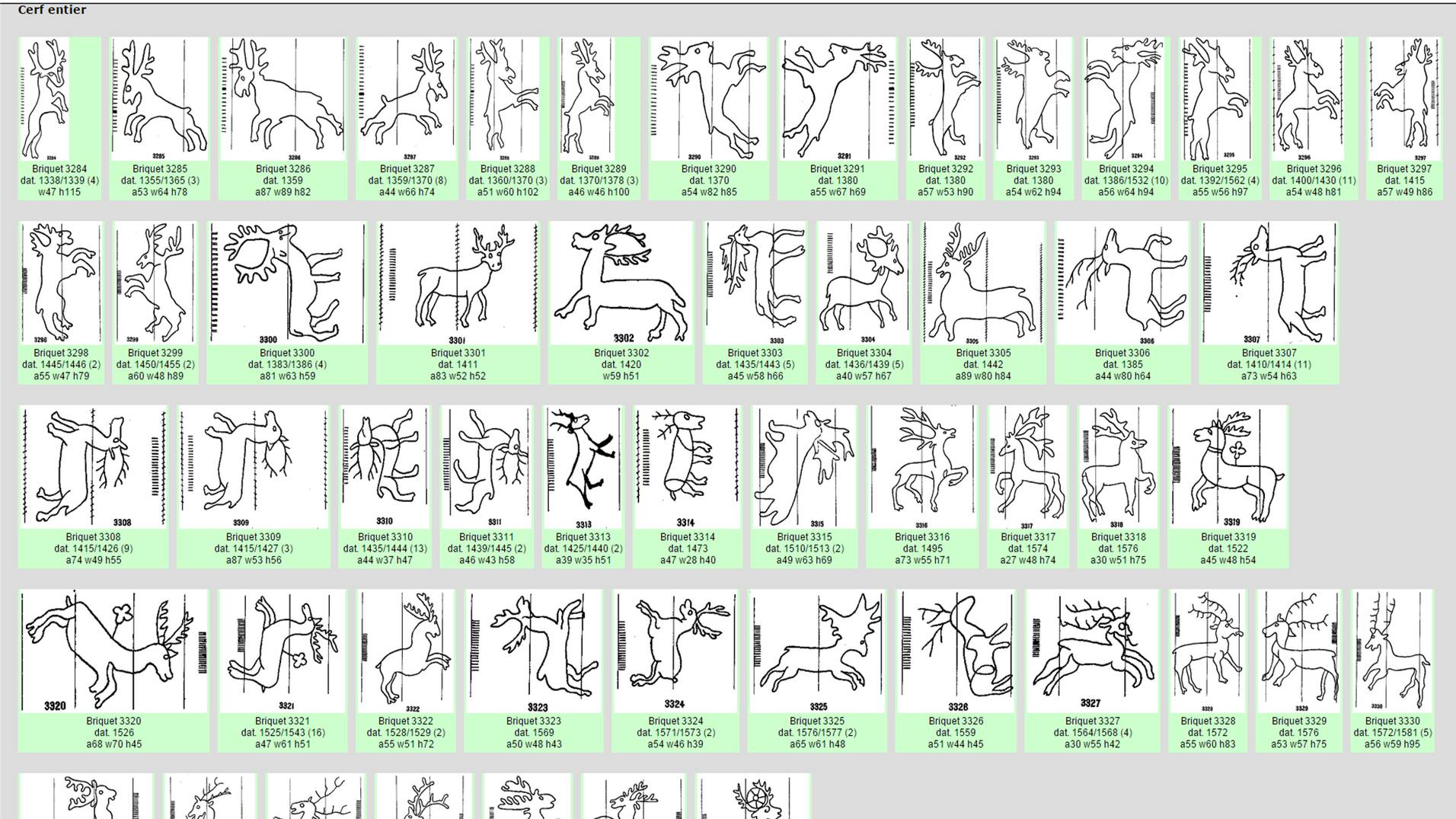
Full stag watermark motifs (from Briquet Online [3])
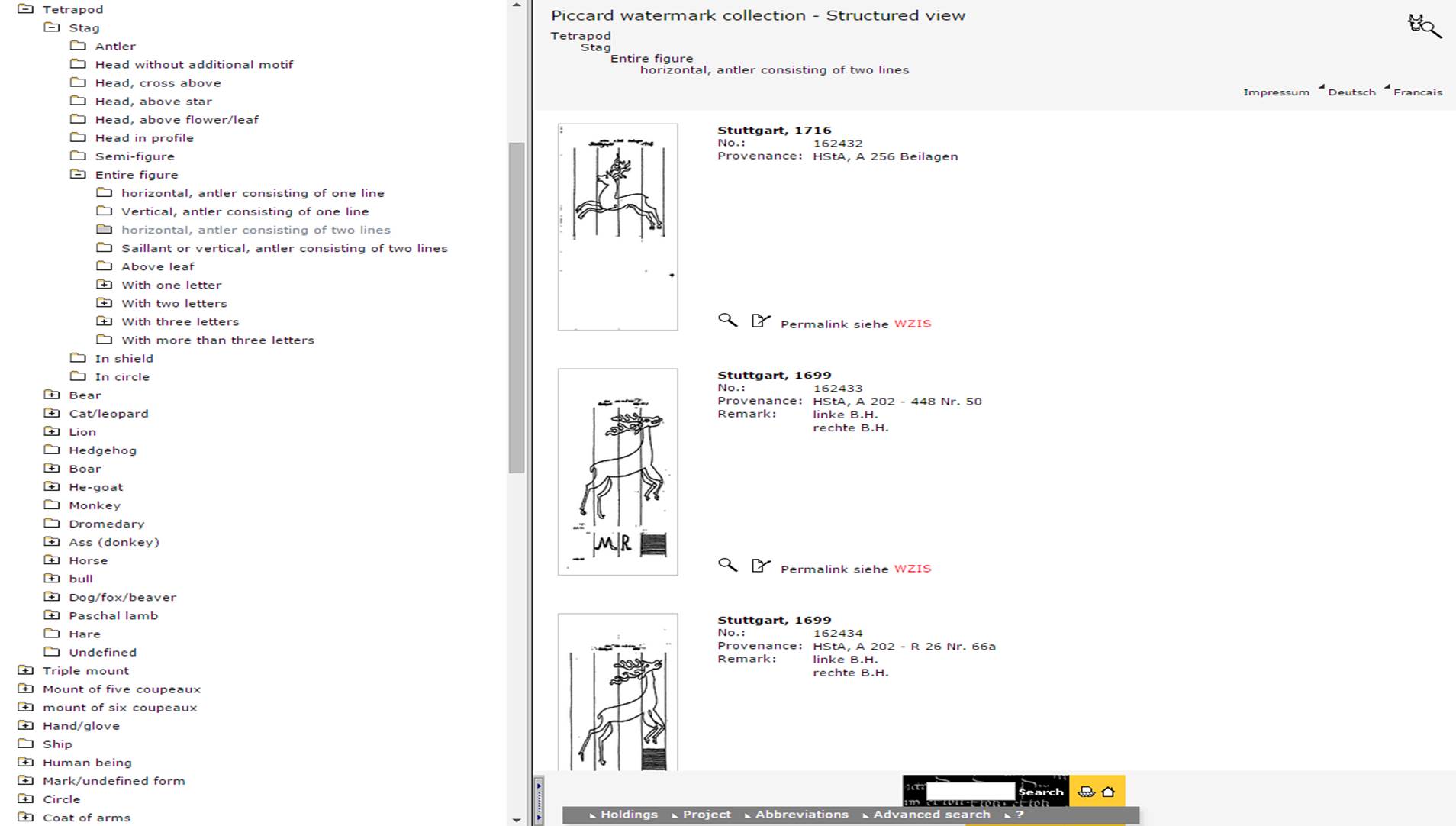
Watermarks featuring "Stag >> Entire figure >> horizontal, with antler consisting of two lines" from the online database of the Piccard Watermark Collection [4]
Alas, none of these quite match our stag leaping over a pond and most date far too early. [5] Nevertheless, three other manuscripts from our Islamic Manuscripts Collection also feature stag watermarks quite similar to that appearing in Isl. Ms. 508. All date to the mid to late 19th century.
In the case of Isl. Ms. 284, the stag is once again leaping over a verdant pond and is accompanied by the name "POLLERI." The manuscript is undated, but the associated patronage of the composition allows for a conservative dating of the transcript of sometime after 1843.
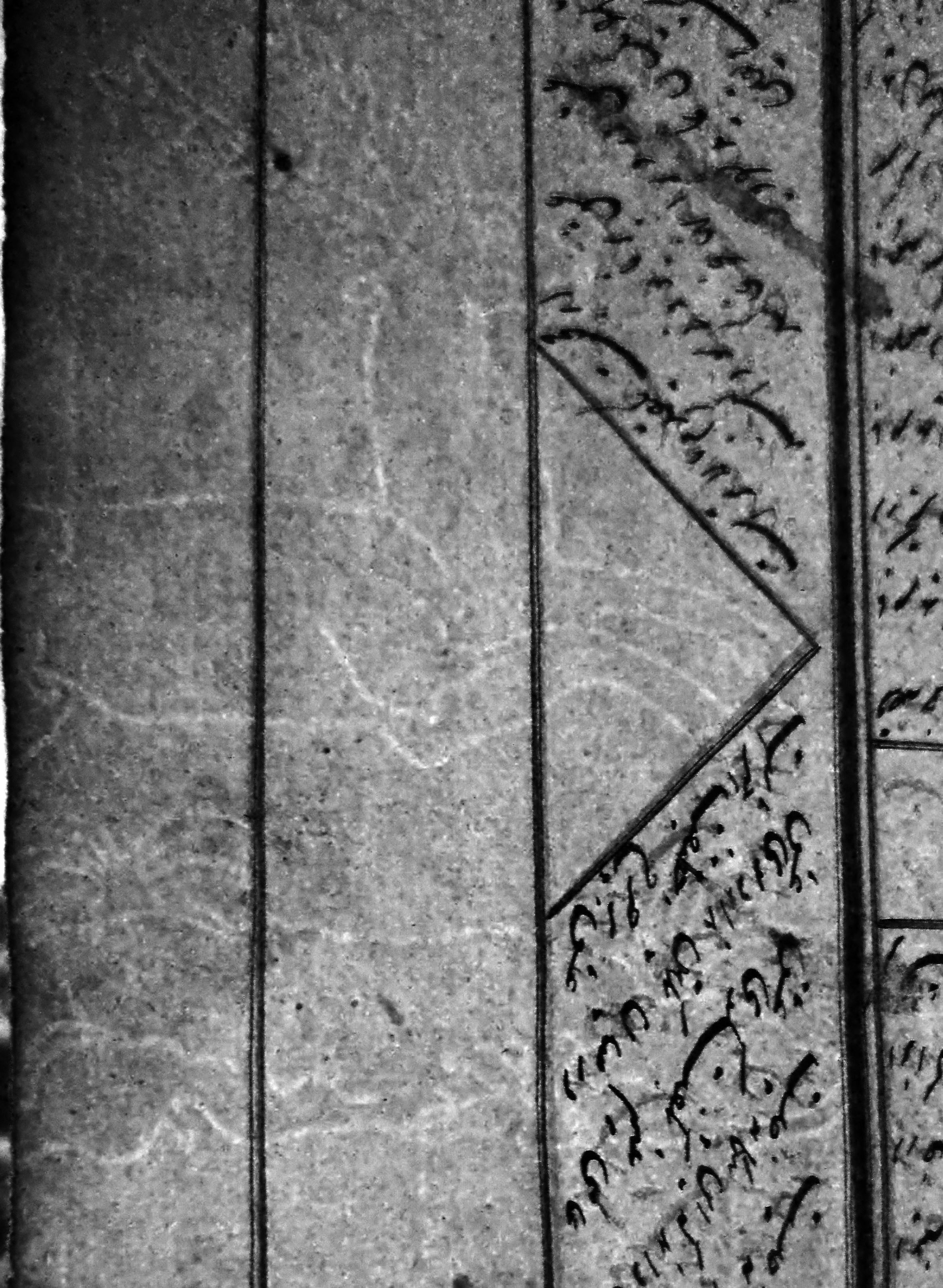
Watermark of stag leaping over pond in p.960 of Isl. Ms. 284.
Another appearance of this mark accompanied by the name "POLLERI" is reported by Adam Gacek in his union catalogue of Arabic manuscripts in the libraries of McGill University. [6] The mark appears in folios which Gacek identifies as transcribed in 1836.
In the case of Isl. Ms. 858, the mark also appears with a name, this time "BAGLIETTO."
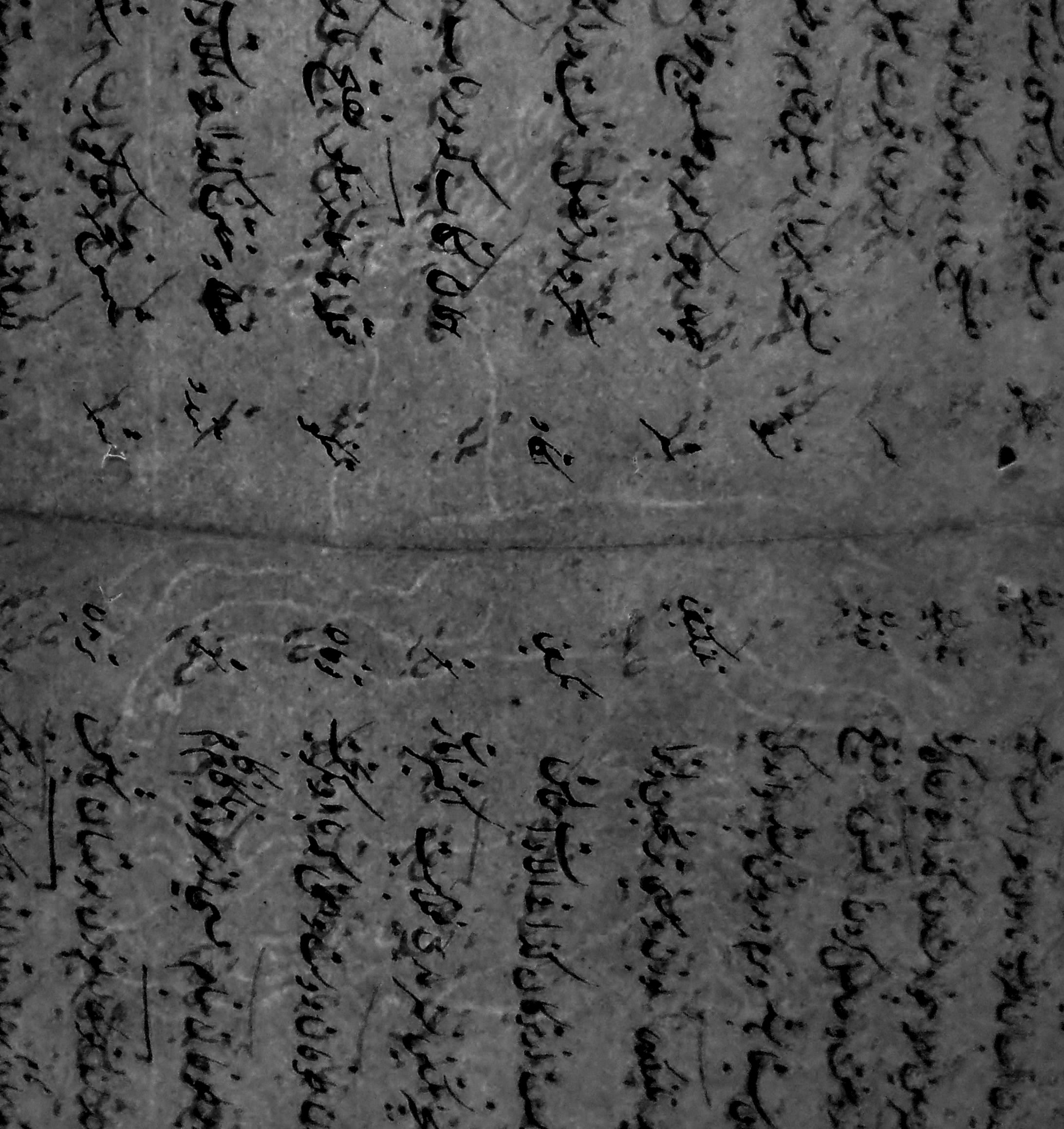
Stag leaping over pond watermark in p.122 and across the fold in Isl. Ms. 858
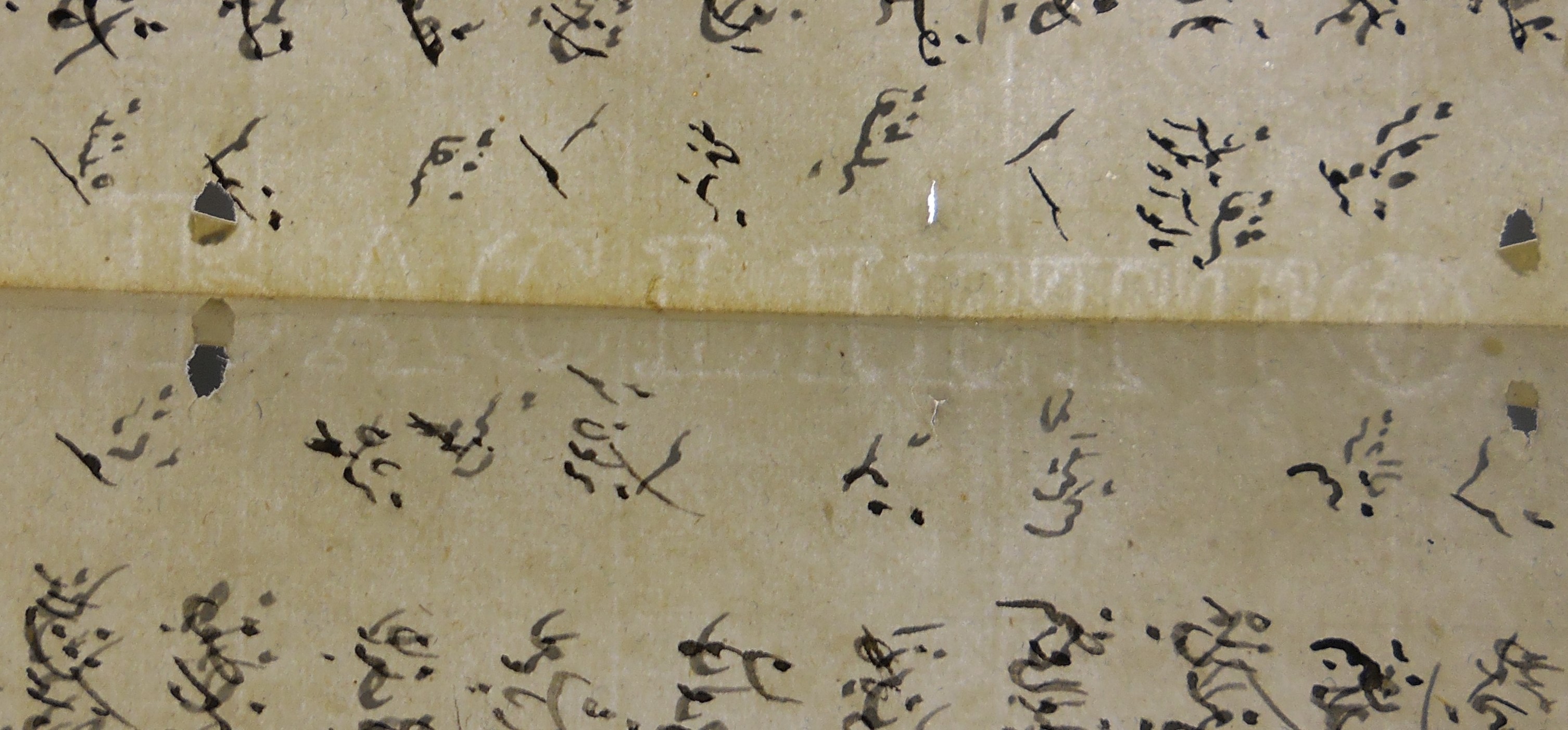
"BAGLIETTO" in p.120 and across the fold in Isl. Ms. 858
The manuscript is also undated, but an ownership statement once again provides a terminus ante quem of 1875.
In both Isl. Ms. 284 and Isl. Ms. 858, the stag watermarked paper is accompanied by a paper watermarked "GIOR MAGNANI" under scrollwork (or arms) with bird above tower and countermarked "ALMASSO."
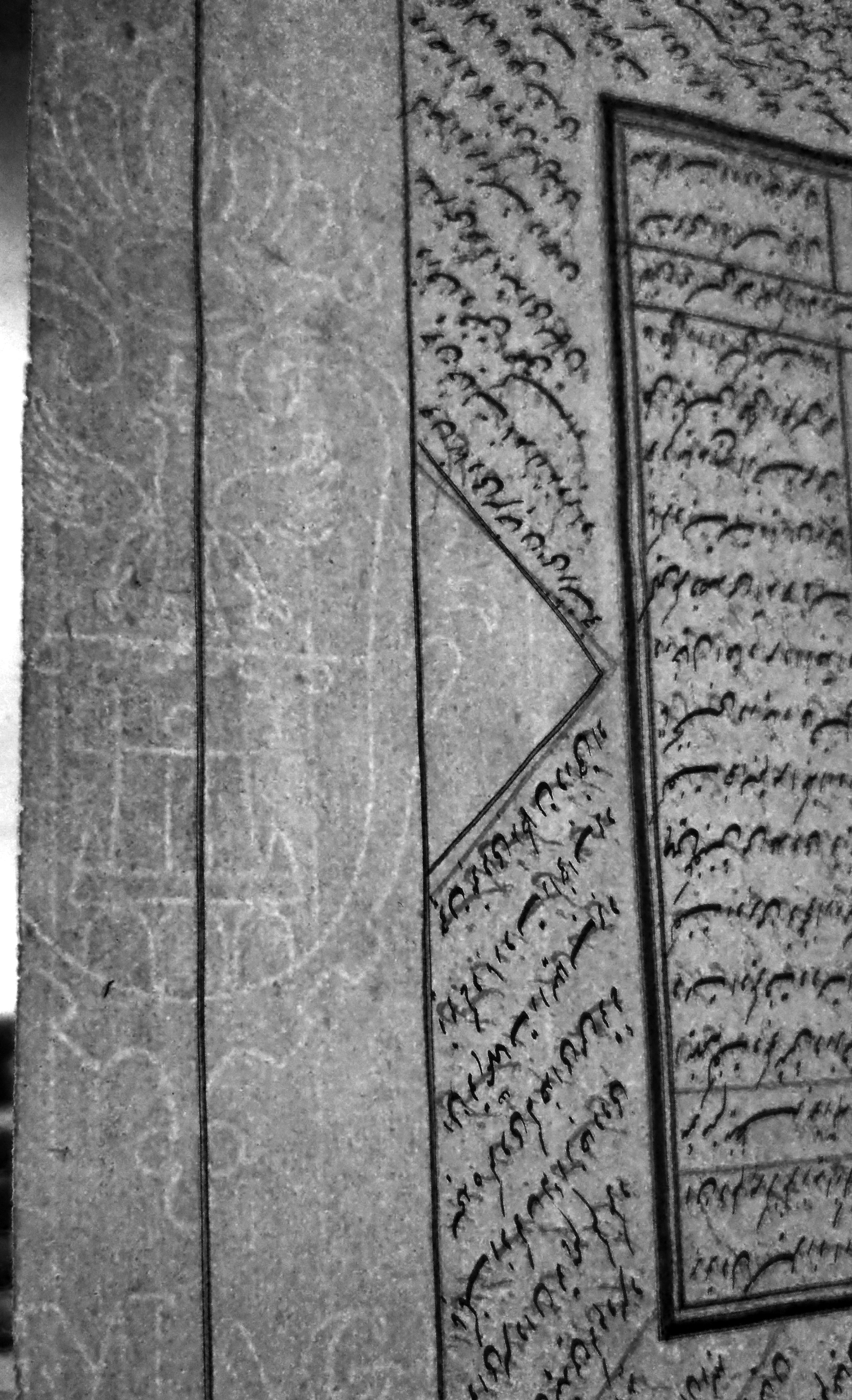
Watermark of scrollwork with "...MAGNANI" visible below at the outer edge of p.802, Isl. Ms. 284
The Magnani Brothers often countermarked their papers this way [7], and their papers appear in several other manuscripts of the mid-19th century including Isl. Ms. 947, copied in 1854.
All in all, this allows us to suggest a conservative range for the circulation of our stag over pond marked paper of 1836-1875, with the most confident dating near the middle of the century. Hopefully this dating can be refined as more examples come to light.
In the meantime, keep a spring in your step!
[1] See Briquet, Les Filigranes, v.I, p.219 ff. (ed. of 1907 available online via the HathiTrust Digital Library)
[2] See the entries under "Stag, full size" in The Thomas L. Gravell Watermark Archive.
[3] Briquet Online, database accessible at: http://www.ksbm.oeaw.ac.at/_scripts/php/BR.php
[4] Piccard Watermark Collection (Wasserzeichensammlung Piccard), online database at:
http://www.piccard-online.de/einfueh.php?sprache=en
[5] A few of those appearing in Russian papers date to the 1820s and 1830s but seem to not resemble our motif and to appear with different names. See nos. 1122, 1123, 1210, and 1321 in С.А. Клепиков, Филиграни на бумаге русского производства XVIII-начала XX вв (Москва 1978), p.65, 70, 75, 228.
[6] Adam Gacek, Arabic Manuscripts in the Libraries of McGill University: Union Catalog, (Montreal: McGill University Libraries, 1991), p.115-116, no.118 / 2
[7] See p.88 in Terence Walz, "The Paper trade of Egypt and the Sudan in the Eighteenth and Nineteenth Centuries and Its Re-export to the Bilad as-Sudan," In The Trans-Saharan Book Trade: Manuscript Culture, Arabic Literacy, and Intellectual History in Muslim Africa, Eds. Graziano Krätli and Ghislaine Lydon (Leiden : Brill, 2011): 73-108.